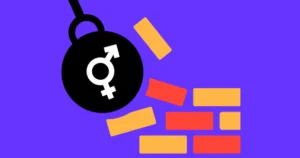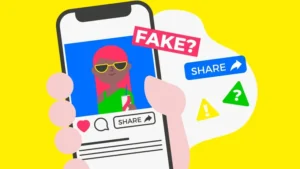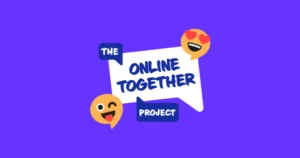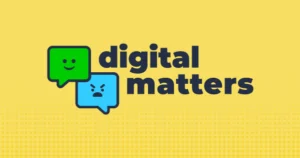Misogyny in schools
Guidance for teachers to make effective change
Misogyny in schools can cause students and teachers to feel worried, anxious or stressed. While many young people who talk about it may not believe the misinformation spread online, they might cause it to gain traction.
Together with Dr. Tamasine Preece (educator and Internet Matters expert panelist), we’ve created this guide to help teachers tackle misogyny in schools effectively.
Quick tips
5 tips to challenge misogyny in schools
To effectively counter misogynist narratives, Dr Tamasine Preece shares her tips for teachers. We need to understand why a child feels the way they do and address the wider issues.
“This isn’t a subject that can be tackled in one conversation, one assembly or one lesson,” says Dr. Tamasine Preece.
Oftentimes, when an issue like cyberbullying, misogyny or something equally as serious gains traction among students, schools pause to address it. This might be in the form of a letter home, a form time lesson or an assembly. While it’s important to address the issue, it cannot be done in one sitting. Equally, staff may not have the training they need to deliver the content effectively.
“Misogyny is a problem as old as time,” Dr. Preece says, so it’s important to understand the context making misogyny in schools popular now. “Children and young people are immersed in a culture that presents distorted, unrealistic and confusing representations of both sexes.”
Learn how children are introduced to misogyny through porn, influencers and algorithms.
Dr. Preece tells school staff to “point [misogyny] out when you see or hear it every single time.”
Misogyny spreads hate and harmful stereotypes about women and girls. When trusted adults let hate speech slide, they create an environment that supports it.
Negative or misogynistic treatment of women and girls is ingrained in a lot of people’s way of thinking. As such, it often goes unnoticed. Or, if it is noticed, it isn’t taken as seriously as other forms of discrimination and abuse. Worse, it is sometimes dismissed as a joke or banter.
Teach children the difference between joking, banter and bullying with Introduction to Cyberbullying, a lesson from Digital Matters. Sign up for free here to access the supporting lesson resources.
Dr. Tamasine Preece urges schools to “create opportunities for children and young people to understand the origins of gender norms and gender stereotypes.”
While many children are exposed to misogyny that reinforces gender stereotypes online, the issue is an historical one that existed well before the internet.
“Even to this day it can be difficult for many men and women, or boys and girls, to break these stereotypes.” For men and boys, they may feel pressured to act a certain way or fit into a certain role. For instance, many men and boys are called out if they cry or if they take the surnames of their spouses when they marry.
This toxic masculinity contributes to issues like homophobia and misogyny in schools among other forms of hate both online and offline.
Similarly, talk about how misandry (the opposite of misogyny), the hate against men, helps reinforce these same things.
“Create opportunities to explore how media such as gaming and music often uphold gendered roles.” Character design, song lyrics and more may “present women according to lazy, sexist stereotypes.” And this is not limited to content created by men. Many women and artists create work that does the same.
Find opportunities to talk about these things as a part of regular lessons. English and History, in particular, offer plenty of opportunities to talk about key characters or figures and their gendered roles. But subjects like Science and Maths offer excellent options too. Have discussions about the lack of female representation in these fields and why that is. Or, lead lessons about women’s contribution to each and why they aren’t more well-known.
Children have unique perspectives on the world around them, and you can facilitate some impressive conversations to help them think more deeply about these things.
See more guidance to help children think critically about what they see online. Or explore the Find the Fake quiz, created with Google, which features 3 different quizzes divided by age group to use with students.
Children and young people often want to help and receive praise. And teachers know that this is true regardless of age.
“When discussing misogyny with boys and young men,” Dr. Preece says, “it can be powerful to appeal to the person with good values you know them capable of being. Recognise and acknowledge good behaviour when you see it.”
Positive reinforcement is a great tool for supporting change, especially among groups of friends. “It takes a great deal of strength to go against the grain and stand up to your peer group. For every young man who looks up to Andrew Tate and similar figures, there is another young man who has considered his values and renders them unacceptable.”
When you support positive behaviour while challenging negative behaviour, you create a clear structure for children to understand.
- What does misogyny look like online?
- How big of a problem is misogyny online?
- Resources to help tackle misogyny in schools
What does misogyny look like online?
Misogyny can take many forms from more casual sexism to outright hate against women. Online, it is common in certain ‘manosphere’ communities that see women as lesser than men or the cause for struggles men face.
Young men who get drawn into these communities often do so because it offers an answer to problems they face. Mental health issues, isolation and feeling like they don’t belong can lead boys to online communities which offer support and answers for the cause of their feelings. Unfortunately, these answers focus on women as the problem.
It’s easy to tell boys their views are wrong and they need to stop spreading hate. However, that usually only confirms their point of view rather than countering it.
How big of a problem is misogyny online?
Based on research with parents and children, we’ve created this brief to help teachers and professionals working with children understand misogyny. See the research at a glance and get practical tips for tackling misogyny online and offline.
Resources to help tackle misogyny in schools
Featured activities for the classroom
- Educate Against Hate – Explore additional resources curated to tackle online hate from a range of web sources.
- PSHE Association – Explore guidance from the PSHE Association on tackling misogyny in the classroom along with relevant resources to support your lessons.
- Outside the Box – A resource from Equaliteach that includes advice and guidance along with different lesson plans and activities.
- Report to police (True Vision) – Learn more about the different types of hate, when it becomes a hate crime and how to report it to the police.
- Stop Hate UK – Report hate crime directly to Stop Hate UK, which will help direct you to the appropriate borough and helpline.
- How to report an issue – Learn how to report different issues, including how to do so across social media platforms along with more general support.
- Men at Work: Training for professionals – Get staff training to challenge misogyny in schools in effective and powerful ways.
- Praesidio Safeguarding – A variety of training courses and webinars on a range of set and bespoke topics to support staff.
- Educate Against Hate – Explore a range of training courses and resources to tackle all types of hate online and offline.
Featured misogyny articles
 Research
Research
Children’s Wellbeing in a Digital World – Index Report 2025
This report is fourth in an annual series evaluating and tracking impacts of technology on children's digital wellbeing across four different areas.
 Expert opinion
Expert opinion
What tech-facilitated abuse looks like in teenage relationships
Lauren Seager-Smith from The For Baby's Sake Trust explores what tech-facilitated abuse looks like in relationships and how to keep teens safe.
 Research
Research
Our recommendations for media literacy in the school curriculum
As the Government reviews the school Curriculum, we highlight the importance of improving media literacy education.
 Research
Research
Parents and children say: Ban nudifying apps
Our policy manager shares our perspectives from parents and children on banning nudifying tools as nude deepfakes rise.
How to best use location tracking apps within your family
Location tracking apps via smartphones are a common way to keep track of your child outside of the home.





